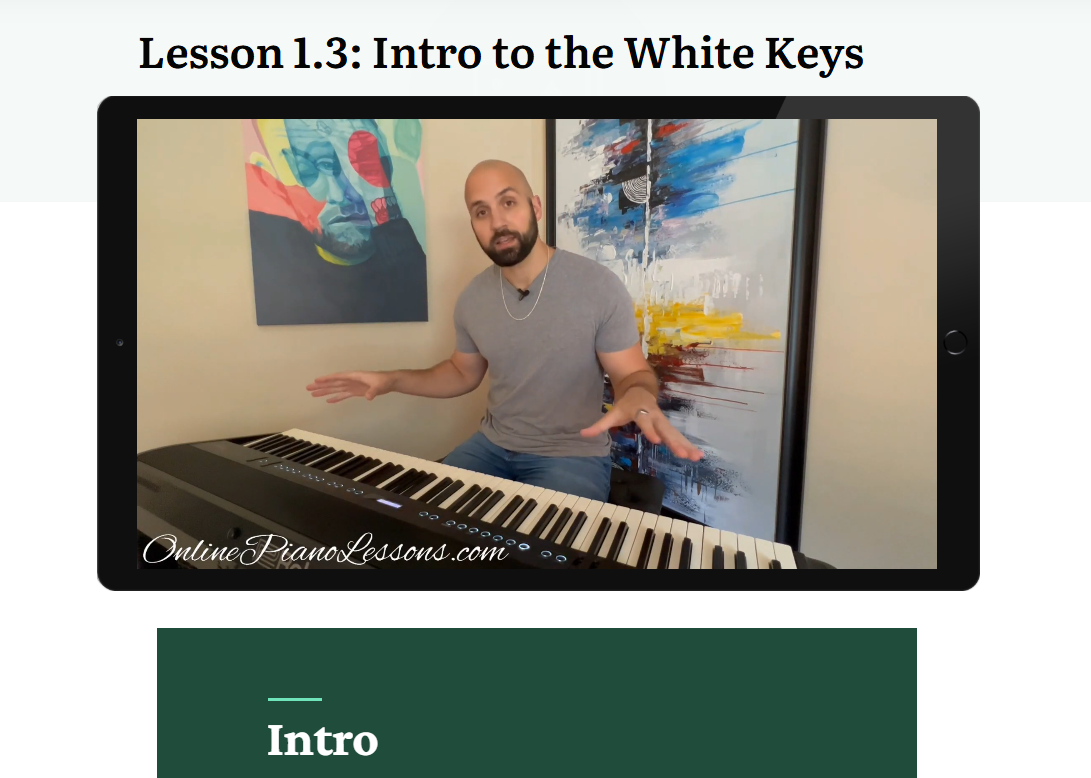If you’re learning piano, you’ll soon hear instructors call out middle C like it’s the North Star of the keyboard — and for good reason. Middle C is a simple, powerful reference point that helps beginning students orient their hands, read sheet music, divide left and right-hand responsibilities, and find their place on the instrument quickly. This guide explains exactly what middle C is, where to find it, why it matters, and practical ways to use it while you learn.
What is Middle C?
Middle C is the C note that sits approximately in the middle of a full-size piano keyboard. In scientific pitch notation it’s usually written as C4, and with the standard tuning of A4 = 440 Hz its frequency is about 261.63 Hz. On a standard 88-key piano, middle C corresponds to MIDI note 60 and is the 40th key from the left.
Although called “middle,” its exact position depends on the size of the keyboard you’re using. On small 61-key keyboards the visually middle key might not be C4 — so knowing the sound and staff position is more reliable than simply looking for the geometric center.
Where to Find Middle C on the Keyboard
- Look for the groupings of black keys: groupings of two and three. Middle C sits directly to the left of the group of two black keys closest to the center of the keyboard.
- On an 88-key piano it will be near the center of the case; on smaller keyboards it will be shifted. If in doubt, find the lowest A (or look up the keyboard spec) and count up, or identify the middle group of black keys and locate the C just left of the nearest two-black-key group.
A simple beginner trick: place a small removable sticker or strip of tape on middle C so your fingers and eyes have an instant anchor during practice.
Middle C on the Page: Staff Notation and Ledger Lines
One of the most useful properties of middle C is how it sits between the two clefs:
- In treble clef, middle C is written on the first ledger line below the staff.
- In bass clef, middle C is written on the first ledger line above the staff.
Because it appears on a ledger line that is shared by both clefs, middle C acts as a visual and conceptual bridge between the right-hand (treble) and left-hand (bass) parts. When sight-reading, spotting middle C quickly helps you judge how high or low the notes on the page will sound on the keyboard.
Why Middle C Matters for Dividing Hands
A common beginner rule is: notes above middle C typically go to the right hand, and notes below middle C go to the left. That’s a handy starting point because:
- It gives you a default “territory” for each hand so you don’t step on each other.
- It simplifies learning the grand staff: the treble clef (right hand) generally lives above middle C; the bass clef (left hand) below it.
- It helps you choose fingerings and hand positions with less hesitation when sight-reading.
Important caveat: this is a guideline, not a law. Composers and arrangers often write parts that cross hands, or the right hand might reach down to play low melody notes and vice versa. Still, middle C is the fastest way to decide who plays what when you’re getting started.
Middle C and Hand/Finger Placement
For many beginner lessons, teachers place the thumbs near middle C:
- Right-hand thumb often starts on or just above middle C to play melodies in the right register.
- Left-hand thumb often sits on or just below middle C when practicing scales and simple accompaniment patterns.
For example, a simple C major broken chord pattern uses middle C (C4), E4, and G4 — all centered around middle C for comfortable hand geometry. Using middle C as a landmark makes learning correct thumb crossings and thumb-under motions less mysterious.
Using Middle C to Judge Register (How High Or Low a Note Will Sound)
When you look at sheet music, quickly locate middle C to judge pitch height:
- Notes written just above middle C will sound higher; notes below will sound lower.
- This is particularly helpful for singers or multi-instrumentalists who want to quickly transpose or estimate range. For pianists, it tells you whether to move your hand up on the keyboard or reach down.
If you get into arranging, middle C becomes a practical tool: placing a melody around middle C keeps it comfortable for average voices and creates balance between accompaniment and melody.
Middle C in Tempo, Rhythm, and Practice Routines
Because middle C provides a reliable center, it’s often the starting point for early technical drills:
- Two-hand five-finger patterns around middle C teach independence and coordination.
- Scales and arpeggios often begin or pass through middle C, so practicing around this landmark is efficient.
- Many sight-reading exercises use middle C as the structural center so that learners can practice switching hands and crossing over easily.
Beginner routines that start on middle C encourage good posture, neutral wrist position, and consistent fingerings.
Practical Beginner Exercises Using Middle C
- Five-finger patterns: Play C–D–E–F–G with RH (thumb on middle C), then LH with G–F–E–D–C. Swap hands and practice legato/staccato.
- Hanon starter: Use short Hanon variations that center on middle C to build evenness.
- Broken chords: Play C-E-G arpeggios starting on middle C with RH while LH plays root notes below.
- Sight-reading check: Take a random short piece and mark where middle C appears; use it to estimate which notes each hand will play.
- Cross-hand drills: Practice a melody that descends from above middle C into the bass staff and have RH play it to train hand crossing and coordination.
These exercises build confidence quickly because they reduce the guessing and give your hands a “home base.”
Common Misunderstandings About Middle C
- “Middle C is the tuning note.” Not true — A4 (440 Hz) is the standard tuning reference. Middle C is a pitch reference helpful for layout and orientation, not for setting concert pitch.
- “Middle C always sits exactly in the middle of the keyboard.” Only on 77- or 88-key pianos does it sit very near physical center; on smaller or older keyboards the visual center may be different. Trust staff position and sound, not geometry.
- “Everything above middle C is for the right hand.” Not always. It’s a guideline; music frequently crosses and overlaps. Use middle C as a starting rule, not a hard restriction.
Advanced Uses of Middle C
- Transposition anchor: If you transpose a piece, use middle C as a reference to shift the entire harmony up or down on the keyboard.
- MIDI and digital mapping: In digital audio and MIDI, middle C is often mapped to note 60. Knowing that helps when programming virtual instruments.
- Ear training: Sing middle C and match it on the piano to develop pitch recognition and relative pitch.
Final Tips for Students
- Mark middle C physically on the keyboard until you know it by heart.
- Practice a few short, repeatable patterns centered on middle C every practice session — habit builds comfort.
- When sight-reading, look for middle C immediately to give your brain an instant orientation for the page.
- Remember it’s a guide, not a rule — musical context will often ask you to move beyond the dividing line.
Middle C is small in name but huge in usefulness. For beginners it’s the bridge that connects staff notation to physical keys and right-hand vs left-hand geography — learn it well and everything else on the keyboard becomes easier to find.
FAQ — Middle C
Q: What note is middle C?
A: Middle C is the C nearest the center of the keyboard, typically called C4 in scientific pitch notation. Its frequency is about 261.63 Hz with A4 = 440 Hz.
Q: How do I find middle C on any keyboard?
A: Find the groups of two black keys nearest the center and pick the white key immediately to their left — that’s middle C. On a full 88-key piano it’s the 40th key from the left.
Q: Is middle C the same on an 88-key and a 61-key keyboard?
A: The pitch C4 is the same sound, but the visual “middle” of a smaller keyboard may not align with middle C. Always rely on the keyboard’s layout (black key groups) and staff notation.
Q: Who should play notes above or below middle C?
A: As a rule of thumb, notes above middle C usually go to the right hand and notes below to the left. But music often crosses hands — this is a flexible guideline, not a strict law.
Q: How does middle C help with reading sheet music?
A: Middle C appears on a ledger line between the treble and bass clefs, so finding it helps you judge how high or low notes on the page will sound and which hand should play them.
Q: Should beginners memorize middle C first?
A: Yes — it’s one of the most valuable single things to memorize. Knowing middle C makes reading, fingering, and hand placement far more intuitive.





 Hi, I'm Thomas, Pianist Composer,
Hi, I'm Thomas, Pianist Composer,  I love playing piano, creating new melodies and songs, and further developing my online piano course and making updates/additions to my site OnlinePianoLessons.com!
I love playing piano, creating new melodies and songs, and further developing my online piano course and making updates/additions to my site OnlinePianoLessons.com!  Now that is what I call fun!
Now that is what I call fun!





